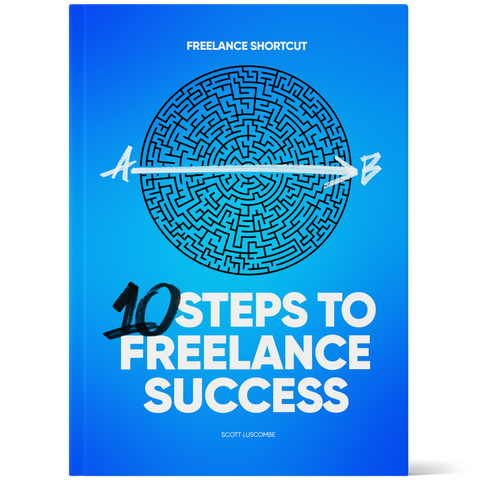What is an estimate?
An estimate is a way of telling your client, as to how much they can expect to pay for the service that they are hiring you to provide. This can also help them determine if they want to simply save money or get the best quality of work availble. Both are mutually exclusive, cheap isn't good and good isn't cheap. An estimate is essentially a price tag for your service. Different from when you buy products, which have a set price, services operate on an estimated cost, since there can be variables before, during and after your projects.
If you are going to hire a plumber to re-do the plumbing of your house, you wont simply hire anyone, hope they do. a good job and see if you can afford the bill. You will likely call up multiple service providers, get quote i.e. estimates for the kind of work you require and see what will fit your needs and your budget.
An estimate is very similar to that of an invoice. It would contain the services that are being provided, the deadlines according to which the project will be run and the pricing for those services. It allows the client to make an informed decision about hiring you to do their project. Overall it should be similar to an invoice with the only difference being in the word invoice and estimate being that names of the respective documents.
What is a quote and whats an estimate?
Quote and estimate are used interchangeably and in some cases can be similar to each other. However the cardinal difference is that quotations or quotes state the exact amount while estimates can have a range and other variable factors.
If as a Graphic Designer, I do branding projects with an hourly estimate of 20 hours and with an hourly rate of $70 and hour. I can provide an estimate of 18-24 hours and the price range would be $1260-$1680. If it then takes me 25 hours to complete the project, I am true to my estimate and I can invoice the client for 25 hours and a total cost of $1750.
On the other hand if I quote that the project will cost $1400 for 20 hours of work, I will be expected to stick to that number irrespective of what happens. Surely, I can revisit pricing if I severely underestimated the piece or with time there were a lot of unexpected costs for the project.
It is because of this, early freelancers stick to estimates because they are still learning the ins and outs of specific typed of projects. Once you complete multiple projects of a certain kind, and know all your costs associated with it, you can move towards absolute pricing i.e providing quotes. For this article, we will stick to estimates only.
What makes an estimate?
A typical estimate is like an invoice, which uses a work breakdown structure and is often itemized, taking in all the project costs for individual components and providing a holistic picture. If the client is hiring you to create a brochure for them, you will breakdown specific costs accordingly.
Start with the header
The header is a straightforward pat of the estimate. It would include the title of the document, your details, details of the client and a number (usually for internal reference). Dont complicate it with things like total amount, total hours worked etc. A tabular estimate would include these things and putting them at the top does more harm than good.
Lisiting the services and relevant costs
The most important part of an estimate is the itemized list or table that shows the client what work is being done and how much you will charge for it. If we run with the brochure design example, the itemized list for a designer/copywriter who charges by the hour would look something like this:

Charging by the hour makes sense for most projects, especially with more complex projects for design and development, where all the costs associated with them is difficult to calculate at the beginning of the project. Some projects are long term, in which case, you have to start working off of hourly estimates and then readjust invoicing as deemed fit.
But if you don't charge by the hour and instead charge by the number of words written like in the case of a copywriter, you can replace the hours column with words and the hourly rate with rate per word. The entire would change as well, instead of writing how many hours it took, you add the number of words and instead of an hourly rate which will likely be higher to rate per word.
For a particular project, some freelancers will want to include costs of additional materials or indirect costs, in which case they can be a separate line item with the hours and cost per hour blocks being empty. This can be applicable in the case of stock images purchased additional documents created, software used etc.
Terms and Conditions
This is the section which requires careful consideration, especially because this determines the satisfaction of all the parties involved with regards to the work done and the funds exchanged. This sections should include the following:
-
Expected Delivery Date of one or a set of collateral.
-
The deposit required by the client to initiate a project.
-
No of revisions and how additional revisions will be treated.
-
When is the payment due after completion of client projects.
Calculating the costs to then get to an estimate
This is the hard part and likely what you're here for. It is deciding how much do you want to or need to charge for your services. Here is a comprehensive method to do just that:
Self awareness
This is ideally the first the step towards creating an estimate. Contrayr to full-time employment, freelancers can't expect a copy paste blueprint of a full-time professional's compensation and apply the same to their pricing. While the impact of a full-time employee is determined by the education they have and the years of experience, freelancers are guaged on the basis of direct work experience that have i.e the projects delivered.
You can start by reviewing portfolios of other freelancers in your field, both with the same level of experience as you and the ones who are your "seniors". After all, portfolios are a culmination of the work done, both quality and quantity. Based on their rate, you can narrow down the general range of pricing where your services should be.
Pricing structure
Billing by the hour is a norm in the freelancing industry and is often the most straightforward and non-convoluted way of invoicing your clients. However, in the longer run, if you don't raise rates, this could hurt you as you get faster with the delivery of work. Some other options that people use to charge, based on their industry are charging per project, per word, per minute of video or per website page. The choice in the matter is simply based on what works for you and your workflow. No particular way of charging is inherently wrong, however clients expect to be charge per hour, which is the norm.
If that's the case why would someone choose one over the other? Well, let's say you are a talented copywriter who charges per hour. You can write 1000 words worth of copy in an hour. If you charge $40 an hour, you get paid $40 but if you charge $0.10 per word, you will get paid $100 for the same 1 hour of work. This makes them earn $60 more for the same exact word. Now on the flipside, you are a freelancer who takes 3 hours to write 1000 words, its better to charge per hour, since you would make $20 more, as compared to pricing per word.
A freelancer taking an hour for 1000 words doesn't make the work lower quality, neither does spending more time ensure better quality. People simply have different working styles, so make sure to select a pricing structure that works for you to deliver the best quality of work.
Market research
Market research is often the best way to know what your skill is worth. You will find information on your particulr skill online. Unless you are in an oddly specific niche, or inventing something entirely new, you will find references. There will also be a well established standard market rate.
Google is a good starting point, and you will find accurate estimates, created by experienced freelancers. Joining online groups specific to your niche is also a good way to understand to find out the accurate budget of your potential clients and adjusting your pricing accordingly.
The market rate will be range in most cases, so based on your experience, portfolio and additional costs (software, office space, profit margin), you can see where you stand. If your experience is of junior graphic designer, you will know that you are in the middle of the pack and choose a pricing that reflects that.
How long will it take?
If you charge by the project or the unit, you are pretty much done here. You can skip to the next step, if you'd like. However, it doesn't hurt to know your how long something takes to get done. If you intend to charge by the hour, this step is the most important and likely the most difficult one.
For a freelancer charging by the hour, careful budgeting of hours or the hourly rate is important. This is how you tell your client how long it will take you to get something done, and what they owe you for the work that you delivered. This is usually very volatile from one person to another, and project requirements only give one half of the picture.
For experienced freelancers, they can simply look at the historical data in their previous invoices for similar projects and based their estimates off of that. If you are a new freelancer, your best bet is to research how long it takes to complete similar projects in general, through web searches or your network. You can then refine your estimates as you complete more projects.
A good way for a new freelancer to gauge estimates is to do a full-scale passion project from the project brief to a finished product. See how long that takes, is it within the market standards and then come up with a price for their services. You can have your work peer reviewed for feedback if necessary. If you are faster, you can have a higher rate, if you are slower, you can scale back as you deem fit.
Write and send
As of this stage, you are all good to go! Its a matter of doing the basic math, put it on paper and send the estimate to your client. You can use very simple tools like Word or Google Sheets to create these.
You can also use tools like honeybook, paypal or other free invoice creation tools to create invoices. Just make sure you are able to track invoice, preview the, make edits and record payments when necessary.
Conclusion
As you see creating estimates isn't a complicated process but is one that requires time and consideration. The structure of an invoice remains largely unchanged across platforms, what differs is how you price your services and present them to your client. You can do so by conducting a self analysis, which combined with a pricing structure and market research can help you deliver the most accurate estimate to your clients. The most important thing is to pay attention to how you work and how long it takes for you to deliver on a certain requirement and then revisit your estimates when necessary. Happy estimating!
Looking for your next client? Read how to get freelance work on LinkedIn

How to Estimate Budgets for Freelance Projects?
Then, pick one of these:

Freelance Book - 10 Step Success Shortcut

Freelance Success Digital Course






